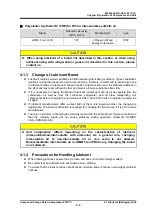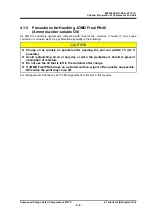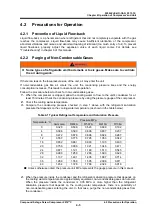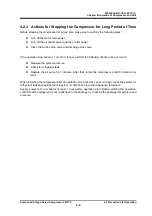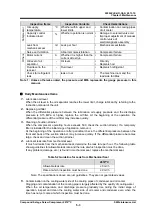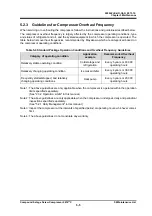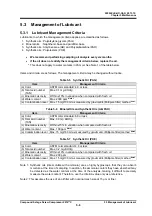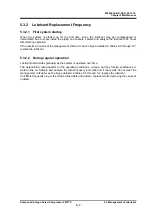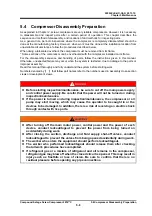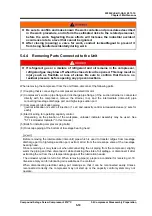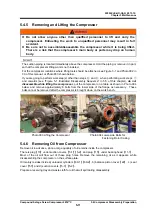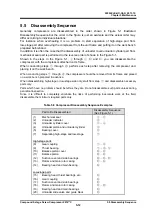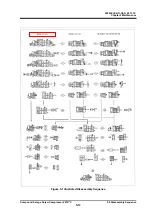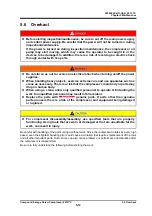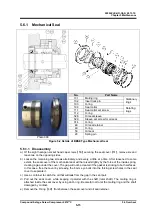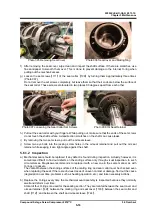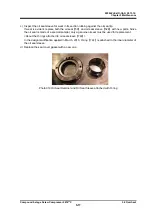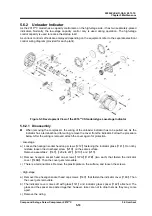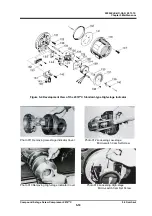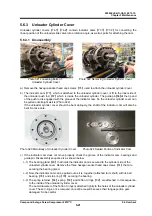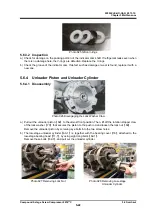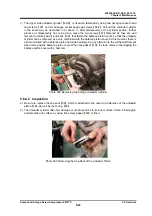
2200LZJE-HO-C6-N_2013.12.
Chapter 5 Maintenance
Compound 2-stage Screw Compressor 2016**C
5.4 Compressor Disassembly Preparation
5-8
5.4
Compressor Disassembly Preparation
As explained in Chapter 2, screw compressors are very reliable compressors. However, it is necessary
to disassemble and inspect parts after a certain period of operation. This chapter describes the
sequence and method of disassembly, and locations of and methods for inspecting parts.
As a general rule, periodic inspections where the compressor is completely disassembled should be
done at the manufacturing factory. However, when work must be done at the installation location from
unavoidable circumstances, follow the procedures described below.
When doing a full-scaled overhaul, the compressor must be removed from its frame.
* Some sections of the compressor can be overhauled with the compressor installed on its frame.
For the disassembly sequence and handling of parts, follow the instructions given in this manual.
Otherwise, unexpected failure may occur when the system is restarted, due to damage to the parts or
improper assembly.
Read this manual thoroughly and fully understand the system before starting work.
Numbers denoted by
【
】
that follow part names refer to the numbers used in assembly cross-section
views or development views.
Before starting inspection/maintenance, be sure to cut off the main power supply
and control power supply. Be careful that the power will not be turned on during
inspection/maintenance.
If the power is turned on during inspection/maintenance, the compressor or oil
pump may start moving, which may cause the operator to be caught in or the
devices to be damaged. In addition, there is a risk of receiving an electric shock
through contact with live parts.
After turning off the main motor power, control power and the power of each
device, conduct lockout/tagout to prevent the power from being turned on
accidentally during work.
After closing the suction, discharge and fluid supply shut-off valves, conduct
lockout/tagout to prevent the valves from being opened accidentally during work.
The worker who enters the equipment should perform lockout/tagout.
The worker who performed lockout/tagout should release them after checking
that all work procedures have completed.
If refrigerant gas or a mixture of refrigerant and oil remains in the compressor,
refrigerant gas may blow off when the closed circuit is opened. This may result in
injury such as frostbite or loss of vision. Be sure to confirm that there is no
residual pressure before opening any pipe connections.




